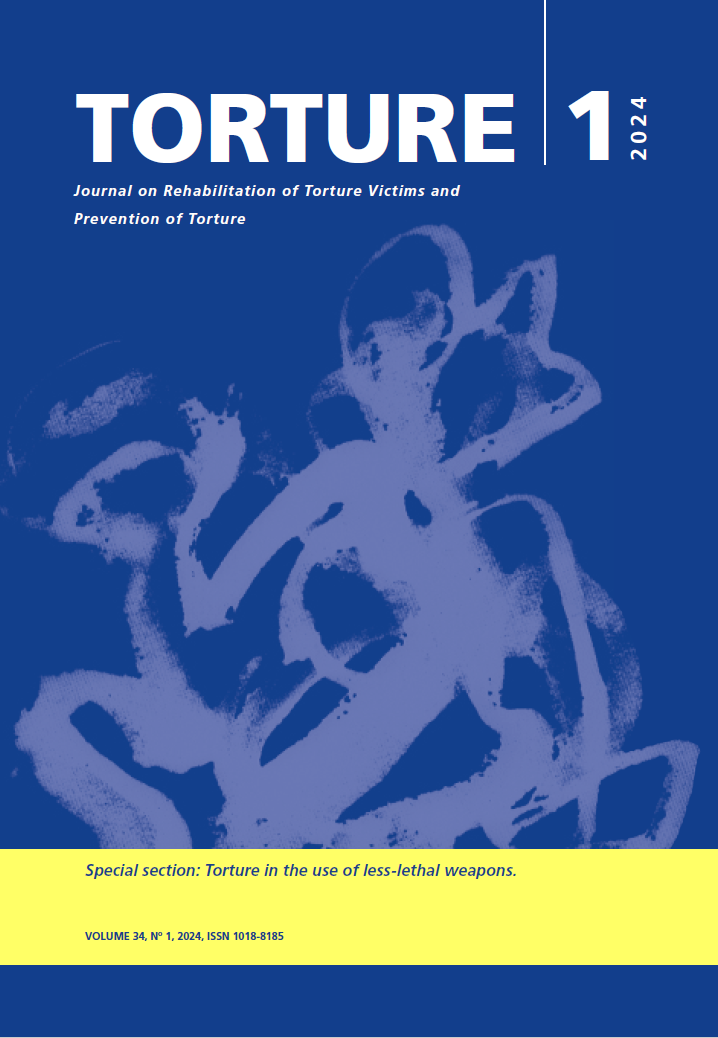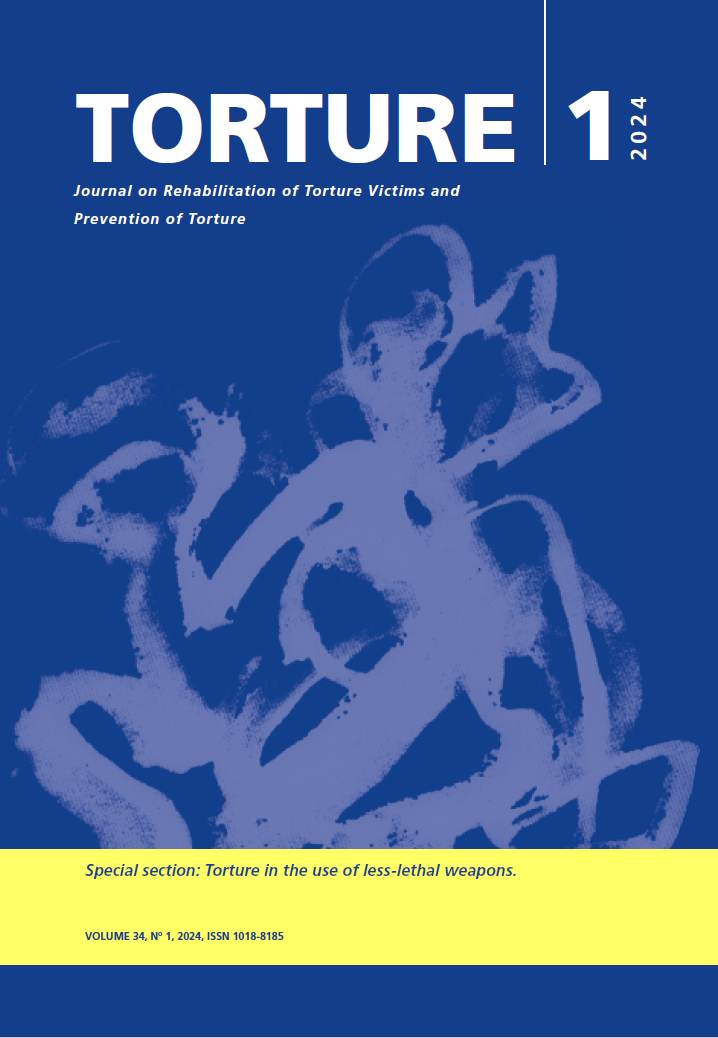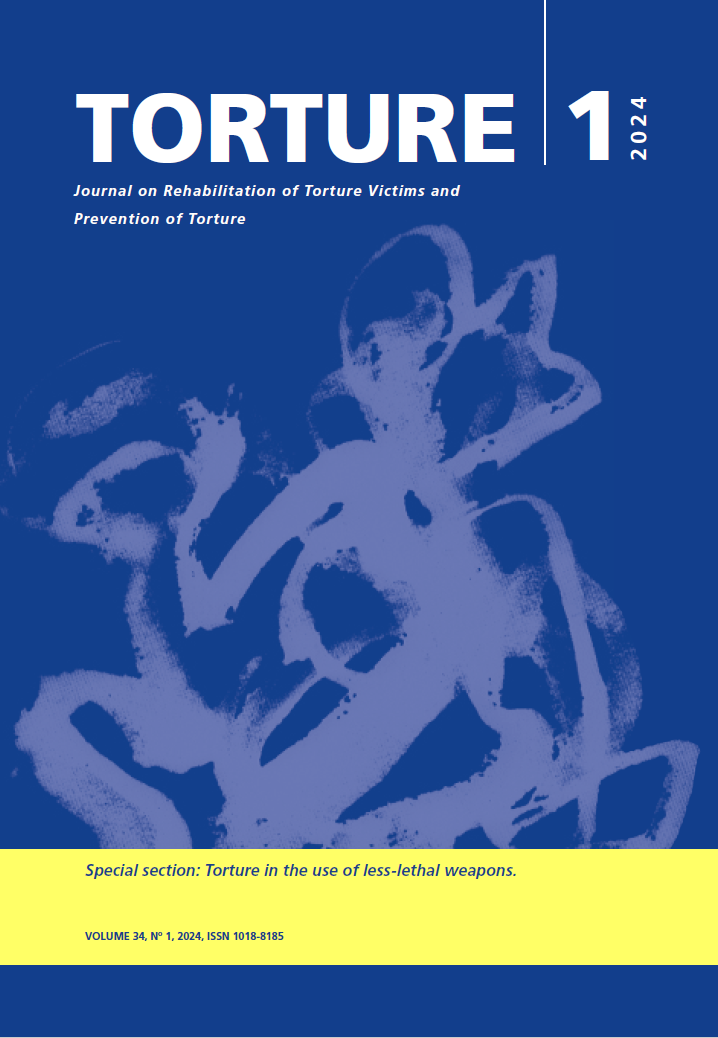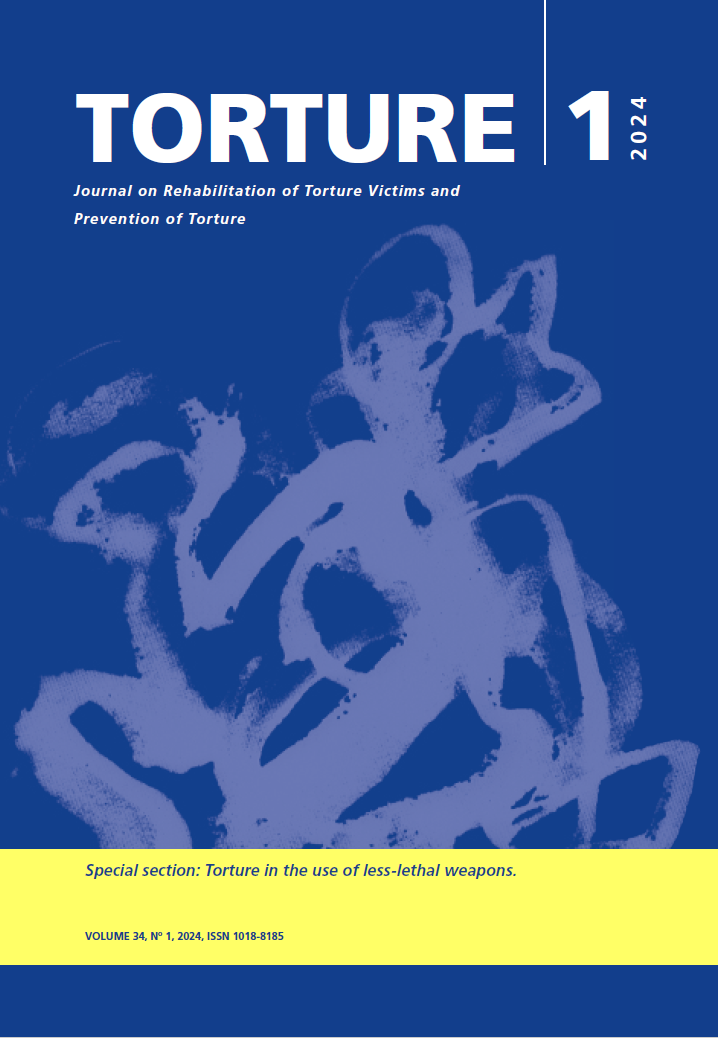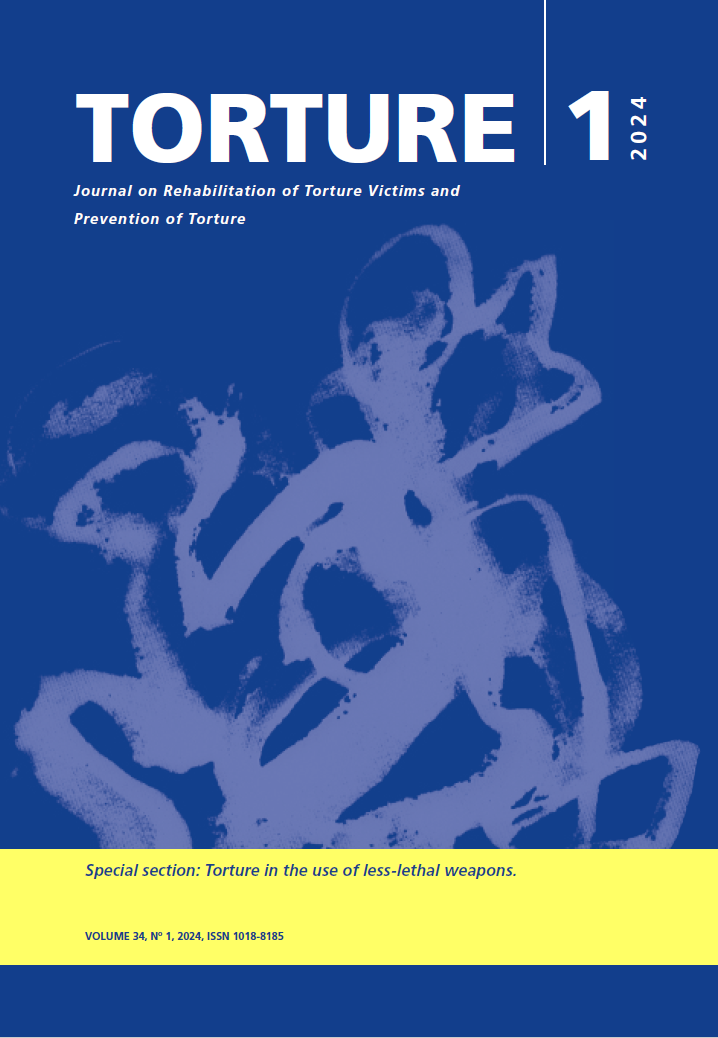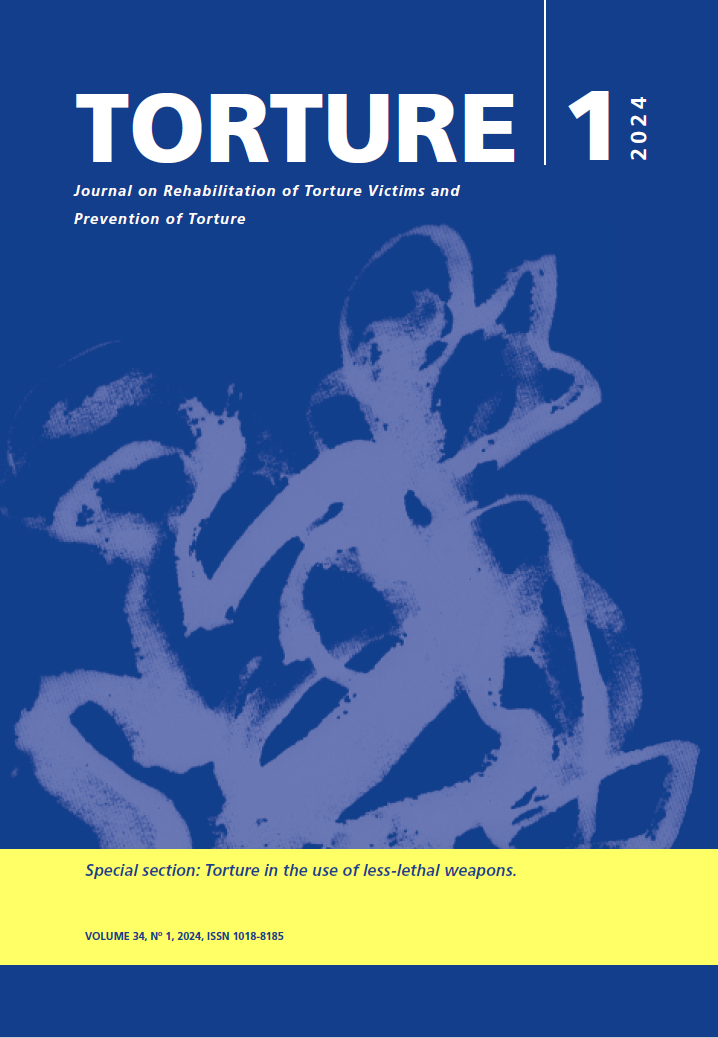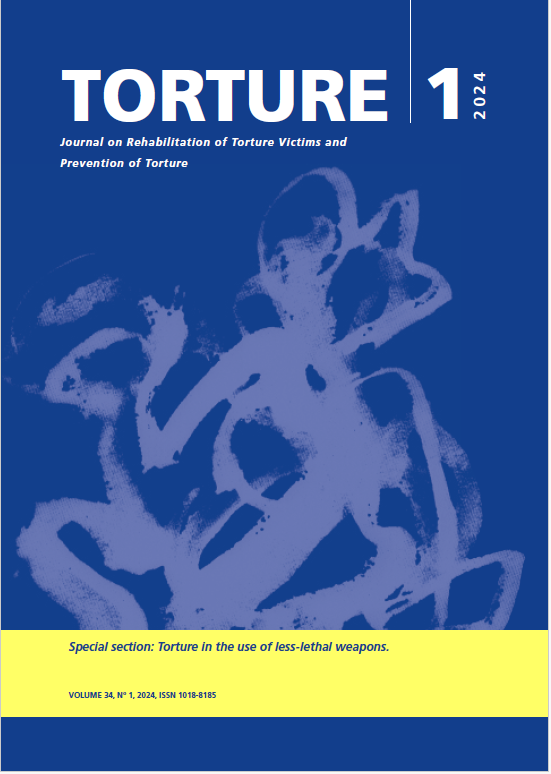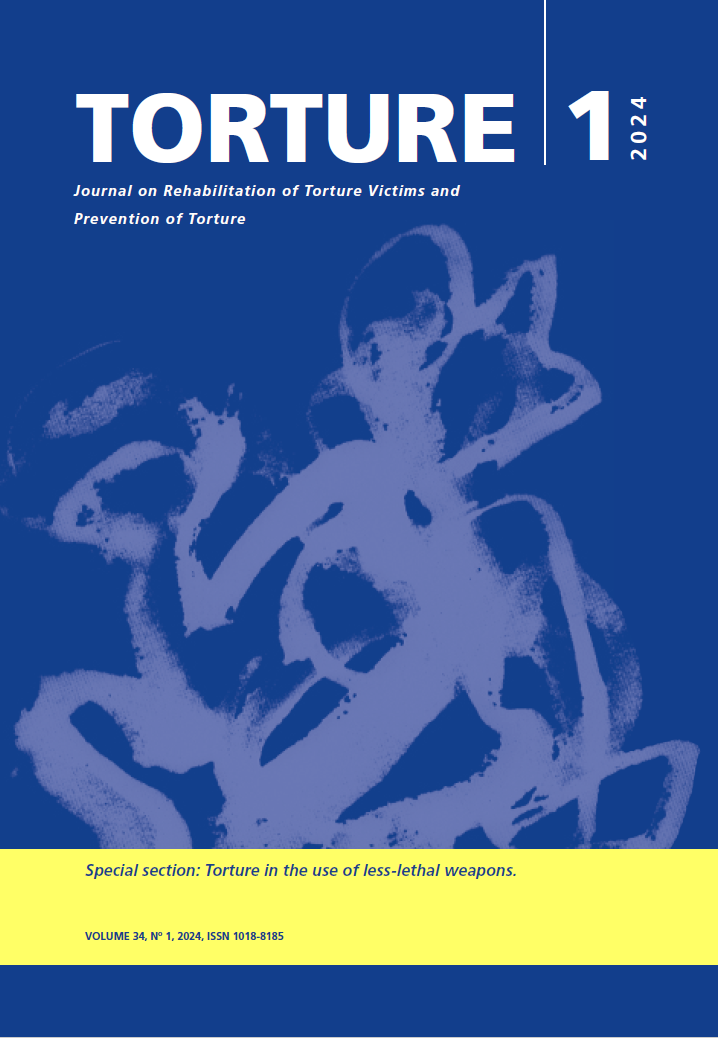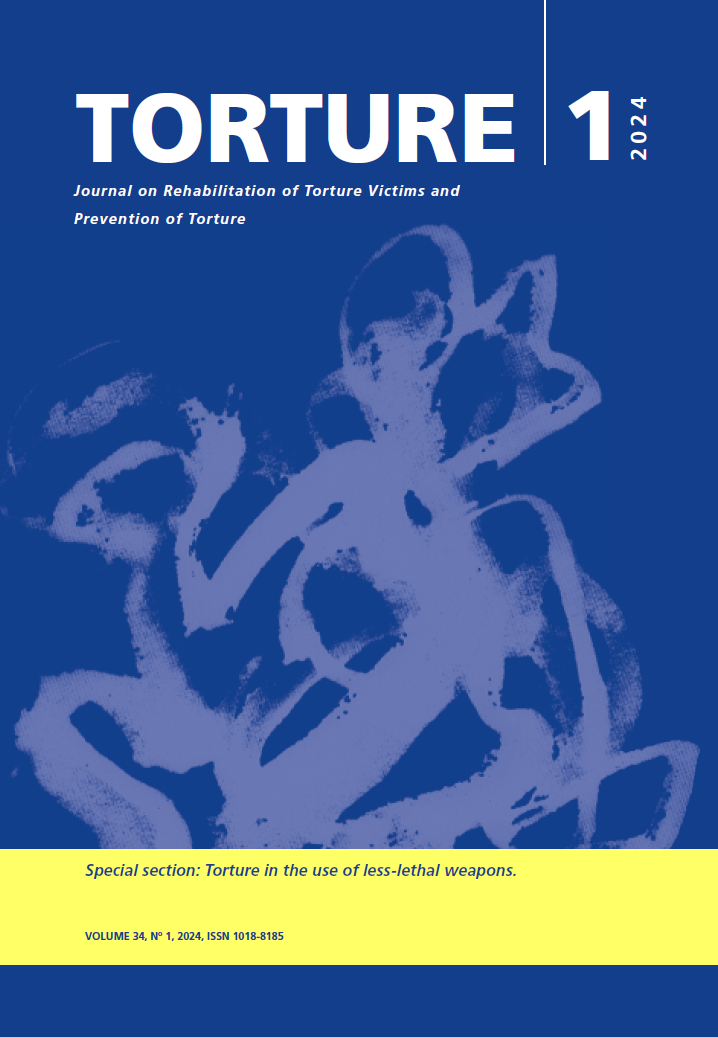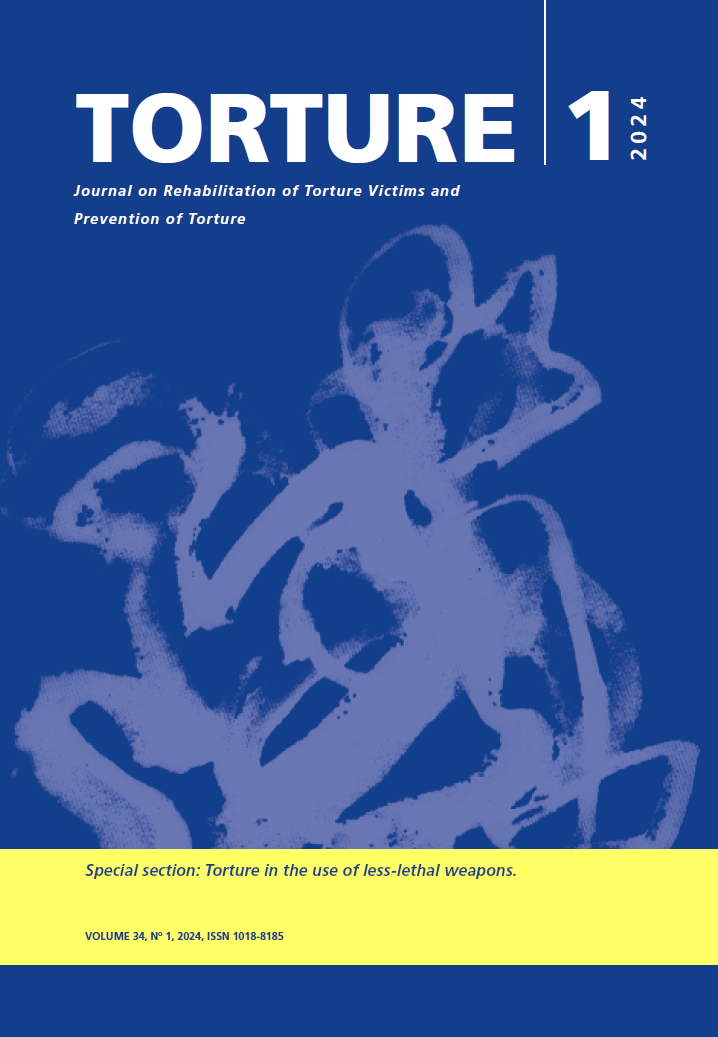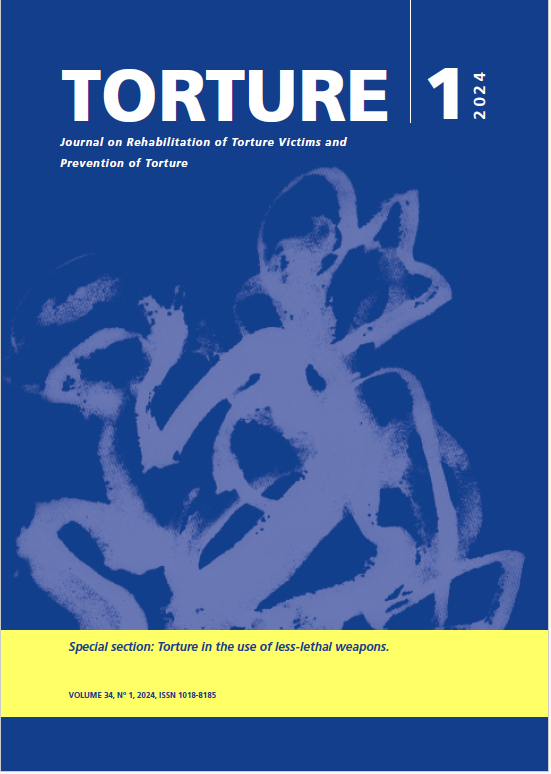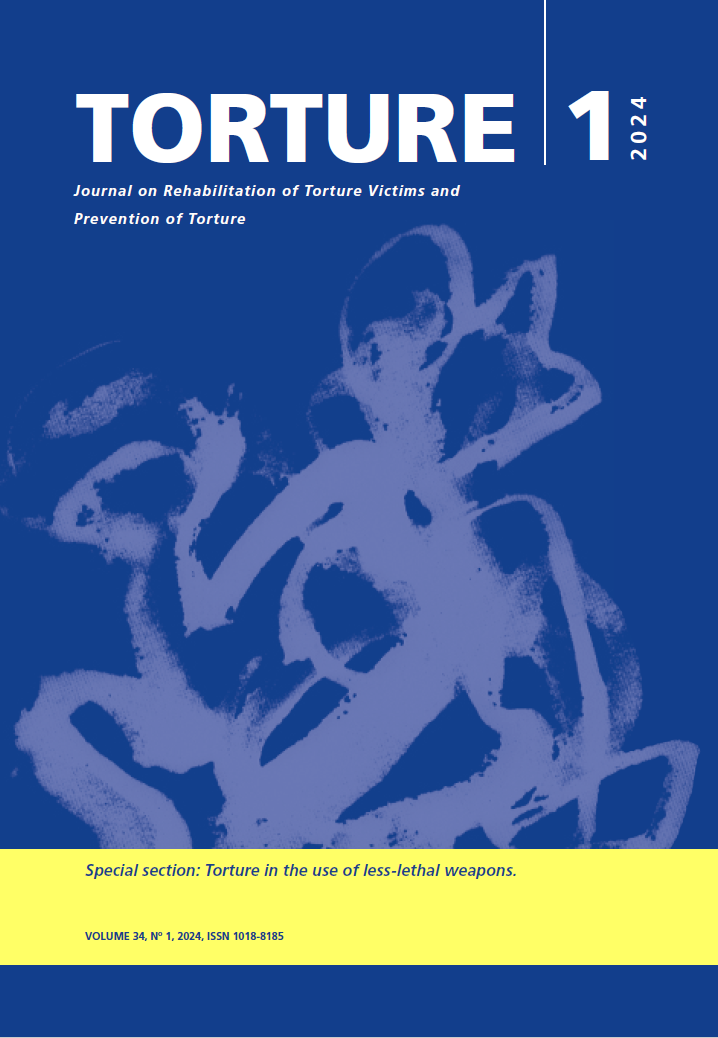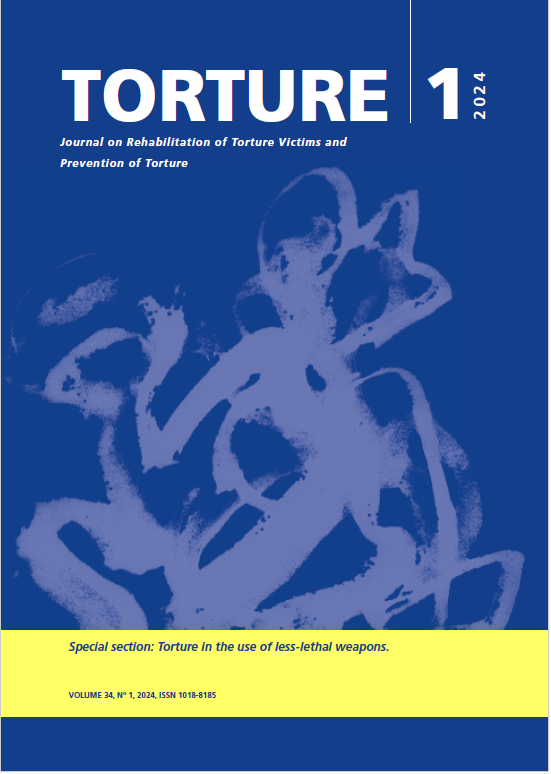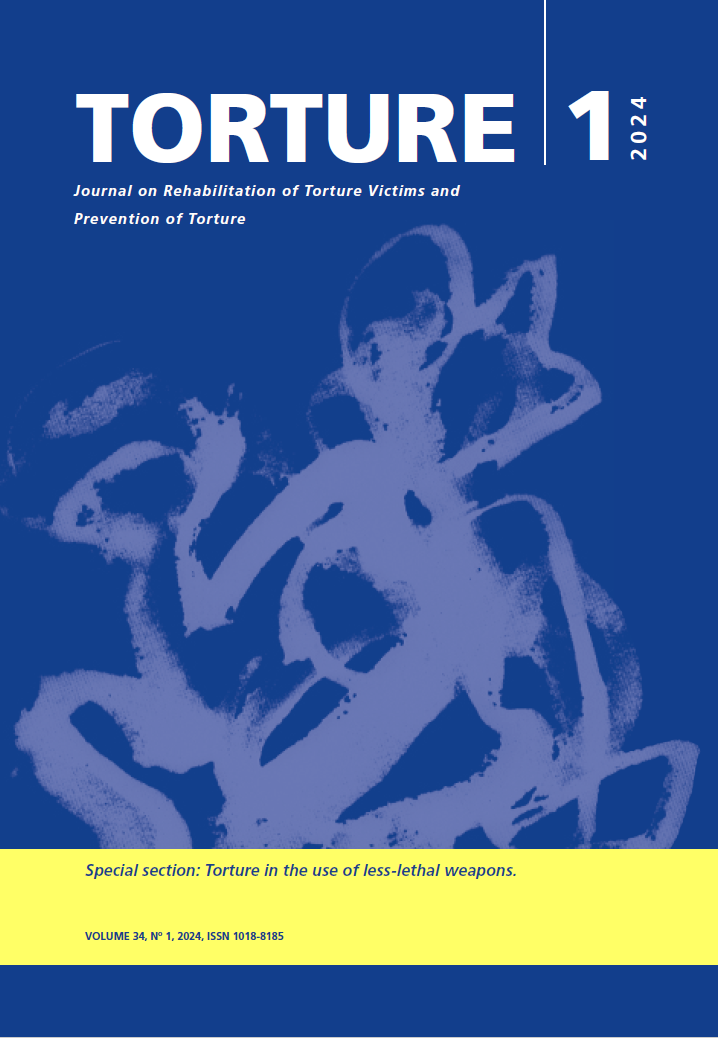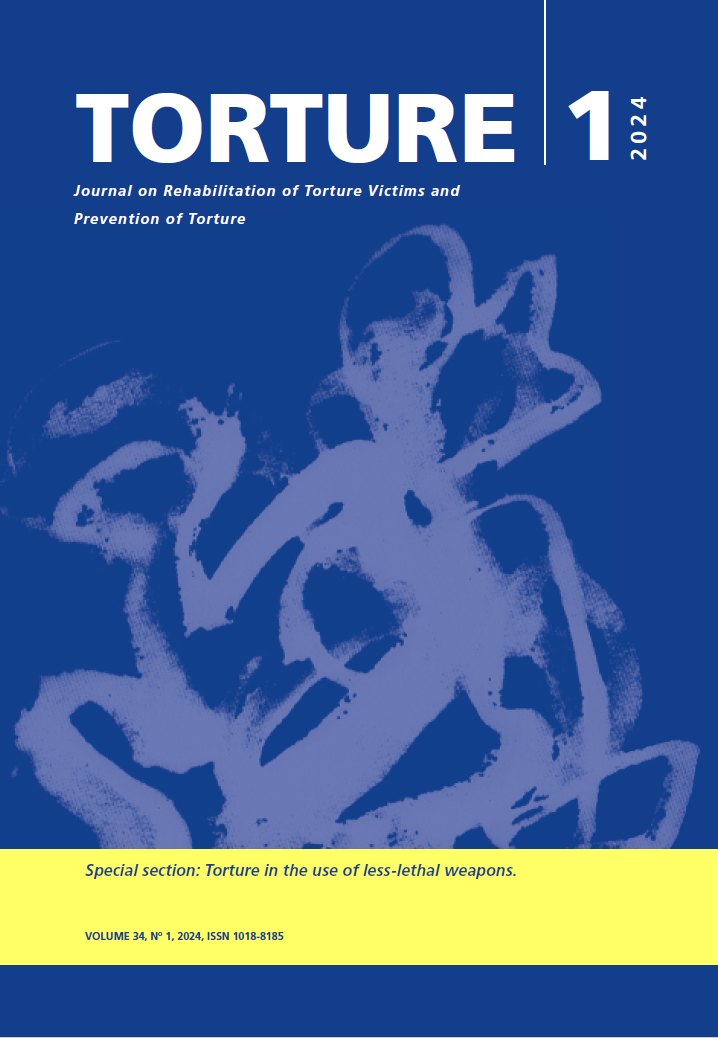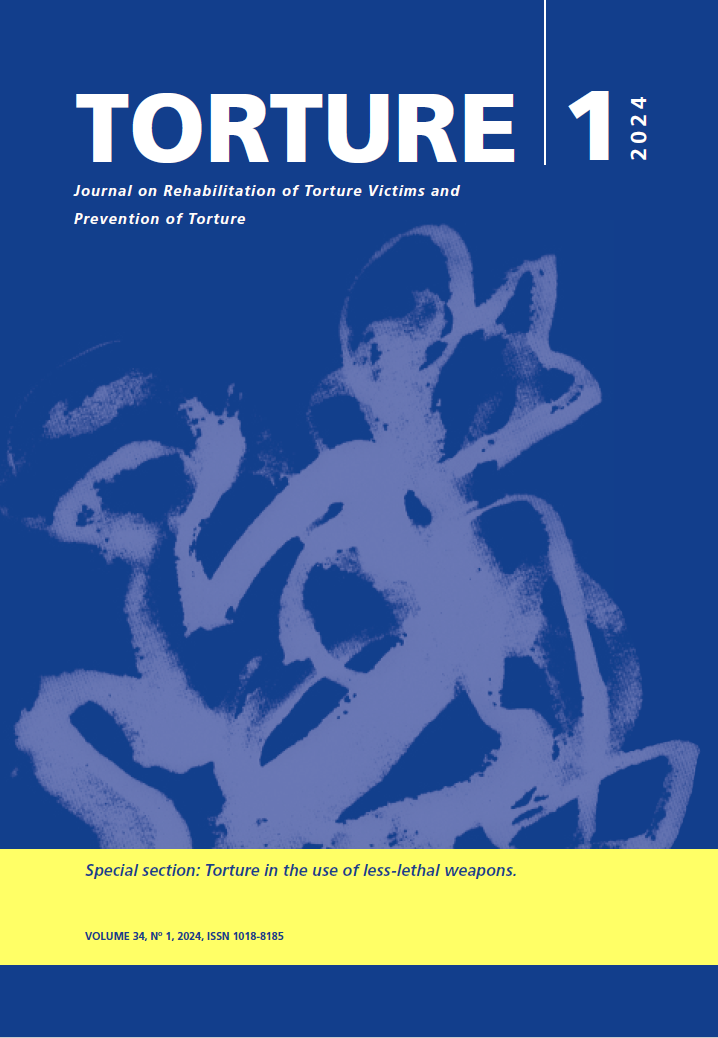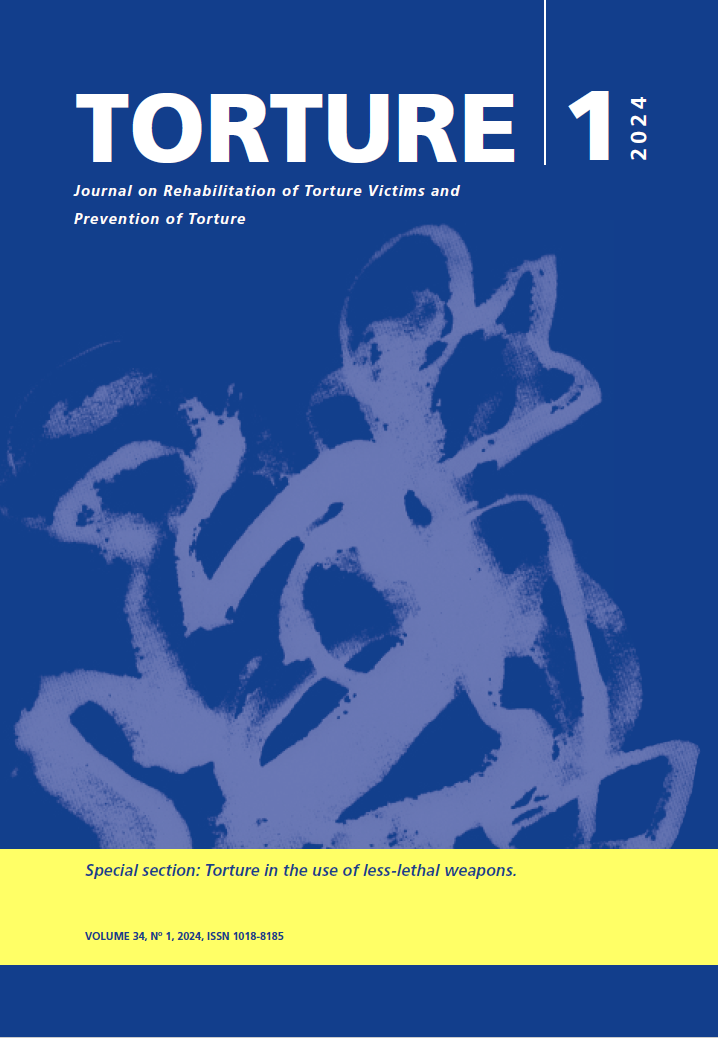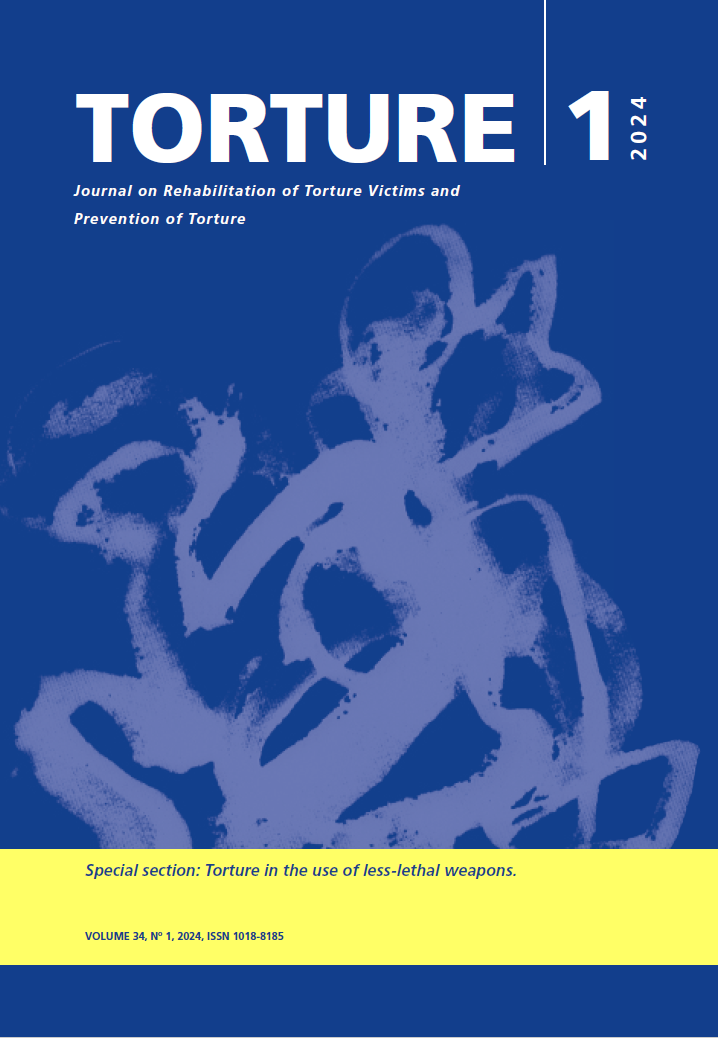Vol. 34 No. 1 (2024): Torture Journal: Journal on Rehabilitaiton of Torture Victims and Prevention of Torture
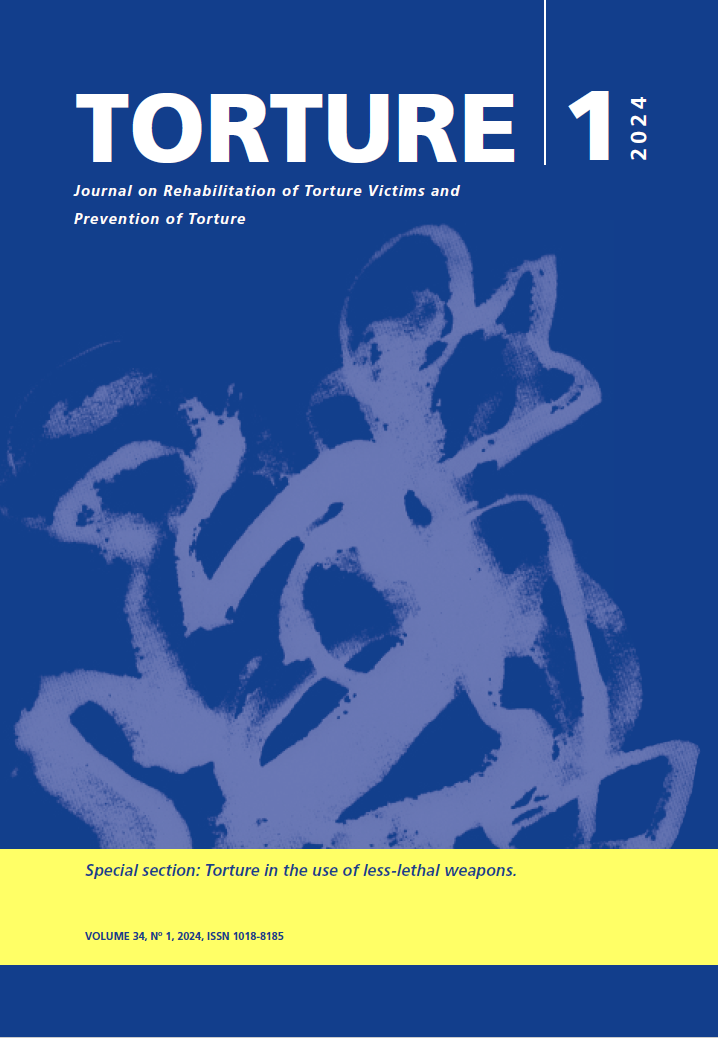
This issue features a special section on the use of less lethal weapons and in particular the use of kinetic energy projectiles as a form of ill-treatment or torture.
Pau Pérez-Sales introduces this issue with an Editorial that reviews the specificities and complexities of strategic litigation in the cases of ocular injuries by less-lethal weapons, with a focus on the challenges of collecting evidence during and after the injury event, building on the Istanbul Protocol's medical and psychiatric assessments. It also explores possible litigation venues for human rights organisations and provides guidance on the ophthalmological, medical, psychological, psychometric and psychosocial aspects of evidence-gathering.
Matthew McEvoy, Neil Corney, Marina Parras and Rohini Haar present a comprehensive review of the state of the art from a medico-legal perspective based on Omega Foundation’s experience.
The UN Special Rapporteur on Torture, Alice Edwards, recalls from her recent report to the UN General Assembly the existence of instruments that are inherently constitutive of torture concerning the use of less lethal weapons, and calls, in her contribution to the Journal, for their international prohibition.
Marie Brasholt and the Dignity medical team present a comprehensive review based on case studies published in the literature on the health impacts of electric shock weapons. This goes hand in hand with the Editorial, which comprehensively reviews elements related to the litigation of cases and, especially, the forensic assessment of eye injuries based on the Istanbul Protocol.
The reviews are followed by case studies with articles by Malose Langa and colleagues (South Africa), Jose Tejada and colleagues (Chile), Anaïs Franquesa and colleagues (Spain), and the MOCAO survivor’s organisation (Colombia). These contributions reflect the perspectives of the survivors and the enormous legal, medical and psychosocial difficulties faced by victims in all these countries.
In the Perspectives section, Carles Guillot provides a first-person testimony of his struggle as a victim of traumatic eye injury and the endeavours of the collective he represents.
Within the regular articles section, Jörg Alfred Stippel presents a review of cases of ill-treatment and torture in the Chilean penal system and Justine Dee a review of evidence-based physical therapies in torture survivors.
Finally, the issue closes with a couple of contributions on the situation of solitary confinement in Turkey based on a visit of a delegation of experts to the country, the situation of the high-security internationally contested prison system in El Salvador by Professor Lutz Oette, the situation of mentally ill persons in prisons in Kosovo by Niman Hajdari, and a letter by Andres Gautier on the situation in the occupied territories of Palestine.
The use of less lethal weapons as a form of ill-treatment or torture is probably one of the most comprehensive and complex issues to have emerged in the field in recent years and we are proud of the important role played by survivors in many of the articles we publish: Undoubtedly a distinct element that we want to maintain and enhance in the future.

